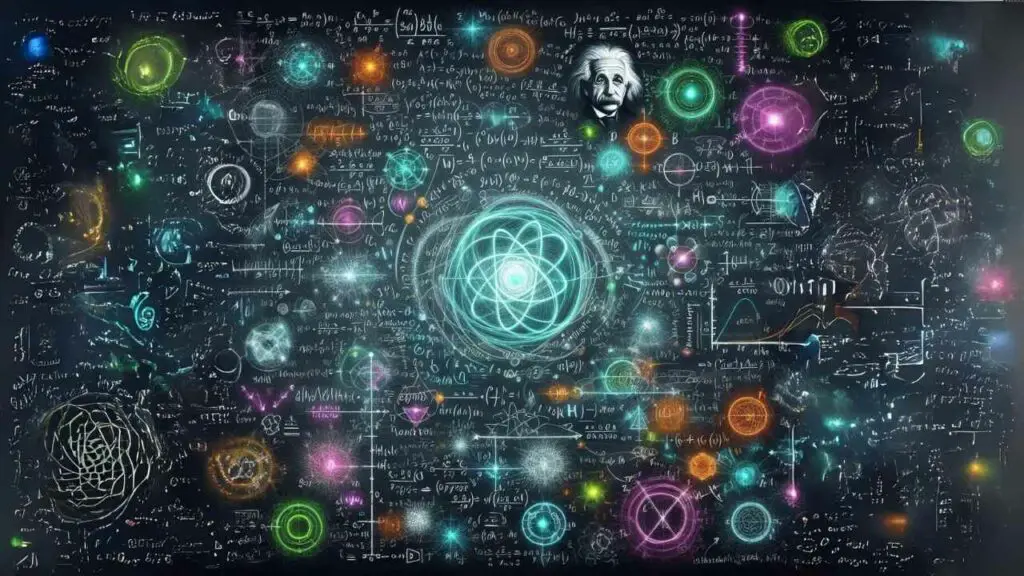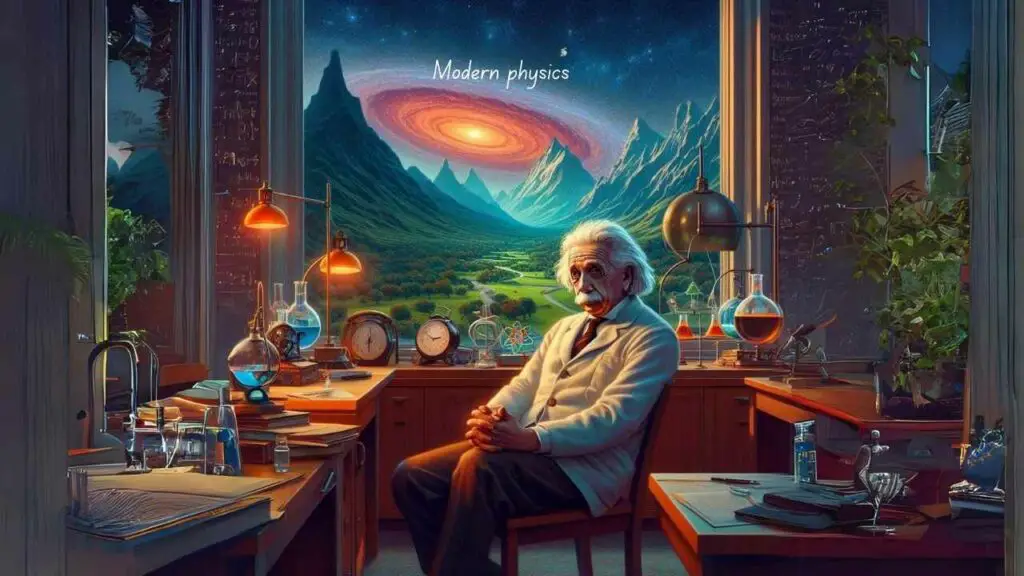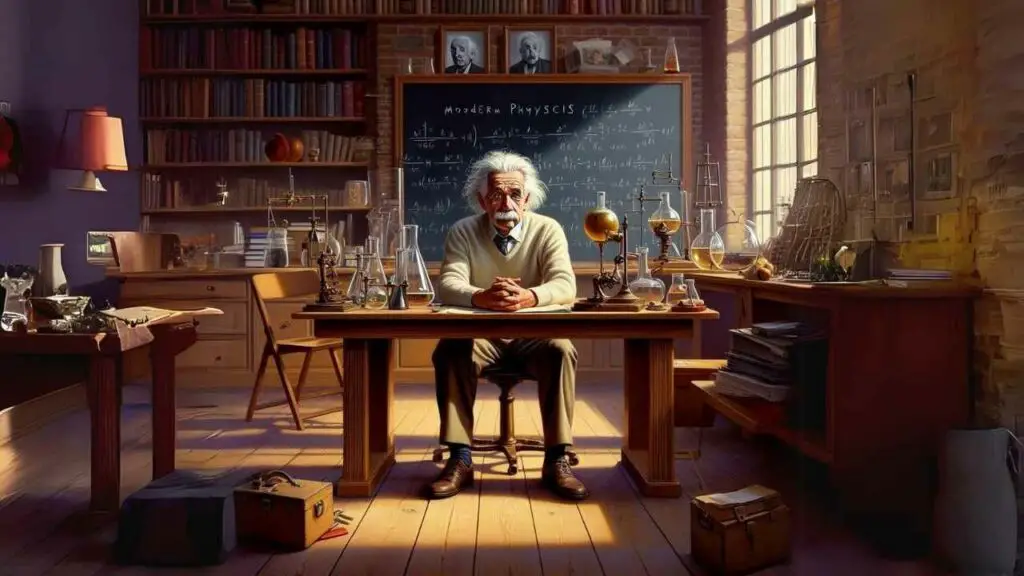Albert Einstein, a name synonymous with genius and innovation, was born on March 14, 1879, in Ulm, in the Kingdom of Württemberg in the German Empire. His early life was marked by an intense curiosity and a deep fascination with the mysteries of science, setting the stage for his future groundbreaking work.
Einstein’s nationality and identity were shaped by the complex geopolitical landscape of his time. He was born a German citizen but later renounced his citizenship in the German Empire in 1896 due to his opposition to its militarism. He became stateless for a few years before acquiring Swiss citizenship in 1901. His life was a journey across different countries, reflecting the tumultuous times he lived in.
What Was Albert Einstein Known For

In the realm of science, Einstein’s significance is monumental. He is best known for his development of the theory of relativity, a revolutionary concept that transformed our understanding of space, time, and gravity. This theory, along with his contributions to quantum theory and statistical mechanics, cemented his status as one of the most influential physicists in history.
Einstein’s work had far-reaching implications, not just in theoretical physics, but also in the way we perceive the universe. His theories challenged and expanded upon the established Newtonian framework, introducing concepts that were initially met with skepticism but later proved to be fundamental to our understanding of the cosmos.
His intellectual achievements and originality made him a global icon, celebrated for his ability to comprehend and articulate the complex laws governing the universe. Einstein’s legacy extends beyond the realm of science; he is a symbol of creativity, curiosity, and the relentless pursuit of knowledge.
Through his life and work, Albert Einstein reshaped the landscape of scientific thought, earning him a place among the most significant figures in the history of science. His contributions continue to inspire and challenge scientists, thinkers, and enthusiasts around the world, making his story a compelling and essential part of our understanding of the modern scientific era.
Major Contributions and Theories

Albert Einstein’s contributions to theoretical physics are monumental, with his theories of relativity fundamentally altering our understanding of space, time, and gravity.
Theory of Relativity: Einstein’s Theory of Relativity is divided into two parts: Special Relativity and General Relativity.
- Special Relativity (1905): This theory revolutionized the concept of space and time. Einstein proposed that the laws of physics are the same for all non-accelerating observers and that the speed of light within a vacuum is constant, regardless of the motion of the light source or observer. One of the most famous outcomes of this theory is the realization that time can dilate, meaning it can slow down depending on the speed at which an object is moving relative to another.
- General Relativity (1915): This theory expanded upon Special Relativity, incorporating the principle of gravity. Einstein proposed that gravity is not a force, as Isaac Newton had suggested, but a curvature of spacetime caused by mass and energy. This radical idea provided a new framework for understanding the gravitational force, especially in the context of large-scale cosmic phenomena. General Relativity has been confirmed by numerous experiments and observations, such as the bending of light by gravity and the precise orbit of planets.
E=mc²: Perhaps the most famous equation in the world, E=mc², emerged from Einstein’s work on Special Relativity. This equation expresses the idea that energy (E) and mass (m) are interchangeable; they are different forms of the same thing. The “c” in the equation stands for the speed of light in a vacuum (approximately 299,792,458 meters per second), and it shows that a small amount of mass can be converted into a tremendous amount of energy. This principle has profound implications, most notably in the fields of nuclear energy and nuclear weapons.
Other Significant Contributions: Einstein’s contributions extend beyond the theories of relativity. He played a crucial role in the development of quantum theory, particularly with his explanation of the photoelectric effect, for which he was awarded the Nobel Prize in Physics in 1921. This work was foundational in the establishment of quantum mechanics. He also made significant contributions to statistical mechanics, especially in his early work on Brownian motion, which provided empirical evidence for the existence of atoms.
Einstein’s theories and ideas have had a lasting impact on the field of physics and our understanding of the universe. His work not only reshaped the scientific landscape but also provided a framework for countless technological advancements and scientific discoveries that followed. His legacy in theoretical physics is a testament to his profound insight and revolutionary thinking.
Nobel Prize in Physics

Albert Einstein was awarded the Nobel Prize in Physics in 1921, a prestigious recognition that highlighted his extraordinary contributions to theoretical physics. However, contrary to popular belief, his Nobel Prize was not awarded for his theories of relativity, but rather for his explanation of the photoelectric effect.
The 1921 Nobel Prize: Einstein received the Nobel Prize for his “services to Theoretical Physics, and especially for his discovery of the law of the photoelectric effect.” This award came at a time when his theory of relativity was still controversial and not universally accepted in the scientific community. The Nobel Committee, therefore, chose to honor him for a contribution that had more empirical support at the time.
Work on the Photoelectric Effect: The photoelectric effect refers to the phenomenon where light shone on certain materials can eject electrons from the surface of that material. This effect was observed in experiments but lacked a theoretical explanation that could account for all its features.
Einstein’s groundbreaking paper in 1905 proposed that light could be described as discrete packets of energy, which he called “quanta” (now known as photons). According to his theory, when light hits an object, its energy is absorbed by the electrons in the material. If the energy of the photons is high enough (which depends on the frequency of the light, not its intensity), it can free electrons from the material, causing an electric current.
This explanation was revolutionary because it challenged the classical wave theory of light, suggesting instead a dual nature of light: it behaves both as a wave and as a particle. Einstein’s work on the photoelectric effect was one of the pivotal steps in the development of quantum theory, a branch of physics that describes the behavior of energy and matter at atomic and subatomic levels.
The recognition of Einstein’s work on the photoelectric effect by the Nobel Prize Committee not only honored his significant contribution to physics but also helped in the gradual acceptance of his other theories, including relativity. It underscored his role as a pioneer in the field, capable of challenging and reshaping existing scientific paradigms. His insights into the photoelectric effect remain fundamental to our understanding of quantum mechanics and have had wide-ranging applications, including the development of photoelectric cells and the advancement of quantum technology.
Einstein’s Influence on Modern Physics

Albert Einstein’s theories, particularly his theories of relativity and contributions to quantum mechanics, have profoundly influenced modern physics, laying the groundwork for numerous scientific advances and technological innovations.
Groundwork for Modern Scientific Advances: Einstein’s work fundamentally changed our understanding of the universe. His theory of general relativity reshaped the field of cosmology and astrophysics, providing the theoretical foundation for the study of black holes and the expanding universe. It also introduced the concept of spacetime, a unified four-dimensional framework for understanding the interrelation of space and time.
In the realm of quantum mechanics, Einstein’s explanation of the photoelectric effect and his work on the theory of light quanta were pivotal in the development of quantum theory. This field has become one of the two pillars of modern physics, alongside his theory of relativity, and it underpins much of our understanding of atomic and subatomic processes.
Technologies Influenced by Einstein’s Work: Einstein’s theories have had a direct impact on the development of various technologies:
- Global Positioning System (GPS): General relativity plays a crucial role in the functioning of GPS technology. The time dilation effect predicted by Einstein’s theory means that clocks on satellites orbiting the Earth tick slightly faster than those on the surface. GPS systems must account for this difference to provide accurate location information.
- Nuclear Energy and Weapons: The mass-energy equivalence principle (E=mc²) is fundamental to the understanding and development of nuclear reactions, both for energy production in nuclear reactors and the destructive power of nuclear weapons.
- Medical Imaging: Einstein’s work on the photoelectric effect indirectly contributed to the development of technologies like the positron emission tomography (PET) scan, a type of medical imaging that relies on the detection of gamma rays.
Scientific Fields Influenced by Einstein’s Work: Einstein’s theories have influenced a wide range of scientific fields:
- Cosmology and Astrophysics: His theories are essential in studying phenomena like gravitational waves, black holes, and the expansion of the universe.
- Quantum Mechanics: While Einstein had reservations about some aspects of quantum mechanics, his early work laid the groundwork for the field, influencing studies in quantum theory and quantum computing.
- Material Science: The photoelectric effect has implications in the study of materials and the development of devices like solar cells and light sensors.
In summary, Albert Einstein’s contributions to physics have not only deepened our understanding of the universe but also spurred a multitude of technological and scientific advancements. His legacy continues to influence and inspire ongoing research and innovation across various fields, demonstrating the enduring impact of his visionary work.
Einstein as a Public Figure

Albert Einstein’s impact extended far beyond the realms of theoretical physics, making him one of the most recognizable and influential public figures of the 20th century. His image and persona have become ingrained in popular culture, and his political and social views have had a lasting impact on global discourse.
Einstein in Popular Culture: Einstein’s distinct appearance, characterized by his wild hair and thoughtful expression, along with his profound scientific achievements, turned him into an iconic figure. He is often depicted as the quintessential “mad scientist” or the embodiment of genius in media and entertainment. His name and image are frequently used in books, movies, advertisements, and cartoons, symbolizing intellect, creativity, and sometimes eccentricity.
Beyond his scientific legacy, Einstein’s quotes and aphorisms have permeated popular culture, reflecting his philosophical insights and wit. Phrases like “Imagination is more important than knowledge” capture his belief in the power of creativity and intellectual freedom.
Political and Social Views: Einstein was also known for his strong political and social convictions. He was a vocal advocate for peace, famously warning against the dangers of nuclear weapons after witnessing their destructive power during World War II. He was a proponent of disarmament and international cooperation, often using his fame to speak out on global issues.
His advocacy extended to civil rights. Living in the United States during the rise of the civil rights movement, Einstein was an outspoken critic of racism and segregation. He was a supporter of the NAACP (National Association for the Advancement of Colored People) and maintained a correspondence with W.E.B. Du Bois, a prominent civil rights activist. Einstein’s stance on racial equality was progressive for his time, and he used his platform to champion the cause of civil rights and social justice.
Einstein’s humanitarian and political engagements reflected his deep concern for humanity and his desire to see a world marked by peace, equality, and freedom. His legacy as a public figure is not just that of a brilliant physicist, but also of a compassionate humanist who used his influence to advocate for a better world. His contributions to science, along with his cultural and political impact, have made him a timeless figure, whose life and work continue to inspire and resonate across generations.
Legacy and Memorials
Albert Einstein’s legacy extends far beyond his scientific contributions, influencing various aspects of culture, education, and public consciousness. His name and work have been commemorated in numerous ways, reflecting the enduring impact of his life and achievements.
Institutions, Awards, and Entities Named After Einstein:
- Educational and Research Institutions: The Einstein name graces many prestigious institutions, such as the Albert Einstein College of Medicine in New York, a testament to his impact on scientific and medical research. The Einstein Papers Project at the California Institute of Technology is another notable example, dedicated to preserving and publishing his extensive written legacy.
- Awards: The Albert Einstein Award, one of the most prestigious awards in the field of theoretical physics, was established to honor scientists who have made significant contributions in line with Einstein’s own work. The Einstein Medal, awarded by the Albert Einstein Society in Switzerland, is another accolade given to individuals who have made outstanding contributions in connection with Einstein’s work.
- Astronomical Entities: In astronomy, Einstein’s name has been immortalized through entities such as the Einstein Cross, a quasar lensed into four images by a foreground galaxy, demonstrating the principles of his theory of general relativity.
Continuing Influence in Science and Popular Culture:
- In Science: Einstein’s theories continue to be the cornerstone of modern physics, with ongoing research in areas like gravitational waves, black hole physics, and cosmology heavily reliant on his insights. His work remains a subject of intense study and discussion in academic circles, inspiring new generations of physicists and scientists.
- In Popular Culture: Einstein’s image and persona have become cultural icons, representing intelligence and scientific curiosity. His influence is evident in various media, from films and television shows to books and music, often symbolizing the pursuit of knowledge and the importance of scientific inquiry.
- Public Imagination: Beyond academia and entertainment, Einstein’s legacy lives on in the public imagination. He is often referenced in discussions about genius, creativity, and the ethical responsibilities of scientists. His life story, marked by both triumphs and challenges, continues to inspire those who value intellectual pursuit and social responsibility.
Albert Einstein’s legacy is multifaceted, encompassing his groundbreaking scientific contributions, his role as a public intellectual and humanitarian, and his status as a cultural icon. Institutions, awards, and memorials bearing his name serve as enduring reminders of his impact, while his theories and ideals continue to influence scientific thought and cultural narratives around the world.
Conclusion
Albert Einstein’s impact on science and his status as one of the most renowned scientists in history are unparalleled. His contributions, particularly the theory of relativity and his work in quantum mechanics, have fundamentally altered our understanding of the universe. Einstein’s theories challenged and reshaped long-held notions about space, time, and gravity, laying the groundwork for much of modern physics.











